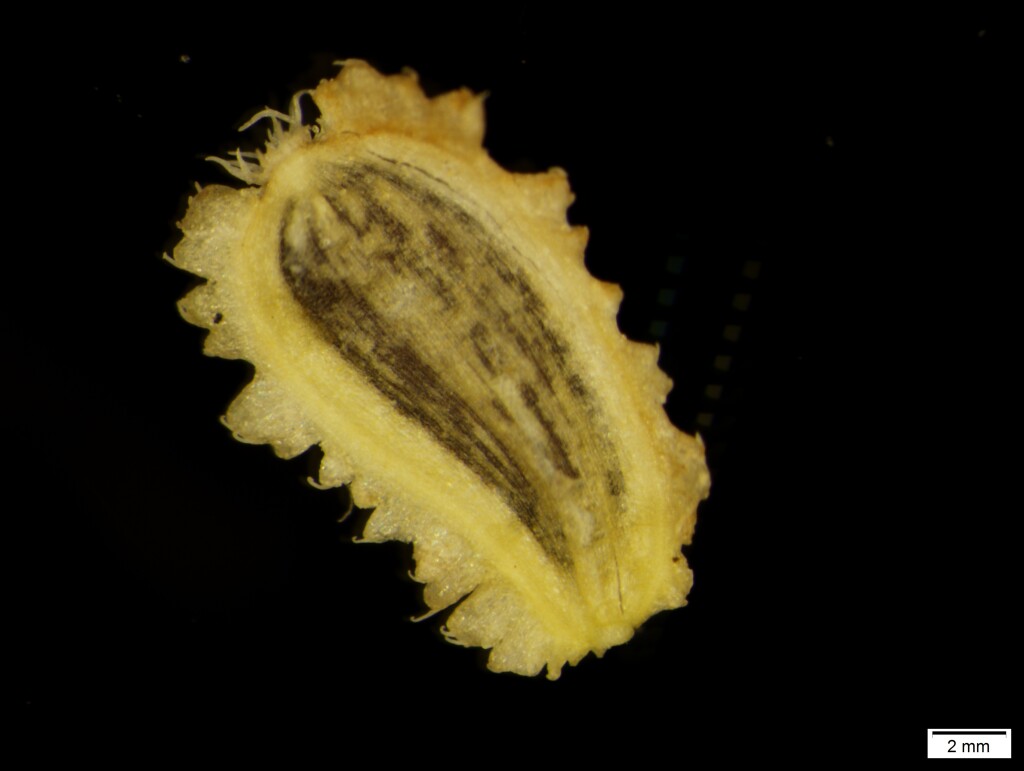Brachyscome rigidula
(DC.) G.L.R.Davis Leafy DaisyAscending to sprawling herb or subshrub, to c. 30 cm high; stems densely glandular-hairy. Leaves cauline, c. obovate in outline, 1–2.5 cm long, 6–20 mm wide, 1- or 2-pinnatifid, glabrous or with scattered to many glandular hairs, primary lobes narrowly elliptic or linear, 0.5–1.5 mm wide, mucronate. Bracts c. 11–20, 1-seriate, equal, elliptic to narrowly elliptic or oblanceolate, 3.3–5.6 mm long, 0.8–1.7 mm wide, obtuse, strongly 1-veined, mostly herbaceous but with narrow scarious margins and apex, hairy; ligules 7–13 mm long, white or mauve. Cypselas flat, obovate, 2.3–3.5 mm long, 1.3–1.6 mm wide, body brown, vascular ribs and wings yellowish; lateral faces smooth or shortly tuberculate, scattered glandular hairs present or absent; wing-like margins 0.05–0.5 mm wide, somewhat swollen, irregularly and often deeply dissected, hairy; pappus 0.1–0.4 mm long. Flowers Aug.–May.
VRiv, NIS, EGL, EGU, HSF, HNF, MonT, VAlp. Also NSW, ACT, Tas. Ranging from rocky herbfield and shrubland of alpine areas (e.g. Mts Bogong, Hotham and Higginbotham) to subalpine grassland (e.g. Themeda grassland above Lake Omeo) and open eucalypt forest.
Specimens from the alpine region, once included in B. multicaulis, have generally broader leaf segments and more narrowly winged cypselas than those from subalpine regions. The status of B. multicaulis remains uncertain. An old specimen at MEL is labelled 'Grampians'. In the absence of further collections the label is considered to be incorrect.
Short, P.S. (1999). Brachyscome. In: Walsh, N.G.; Entwisle, T.J., Flora of Victoria Vol. 4, Cornaceae to Asteraceae, pp. 835–859. Inkata Press, Melbourne.
 Spinning
Spinning
